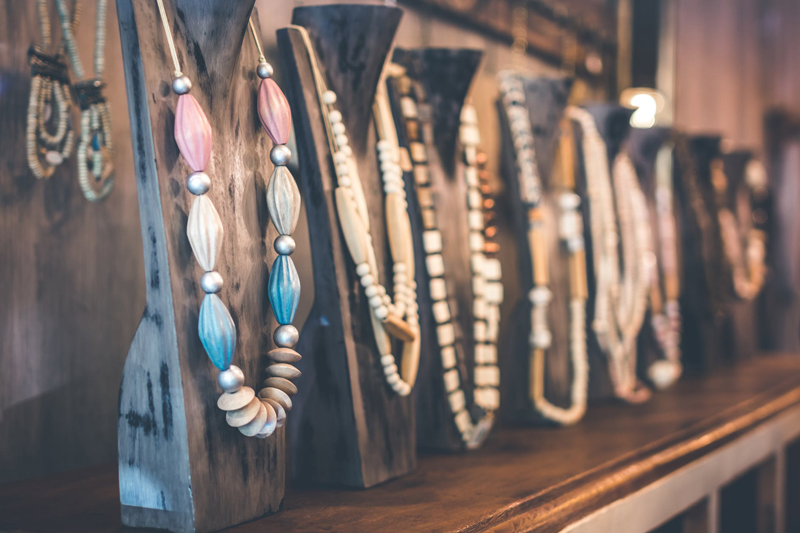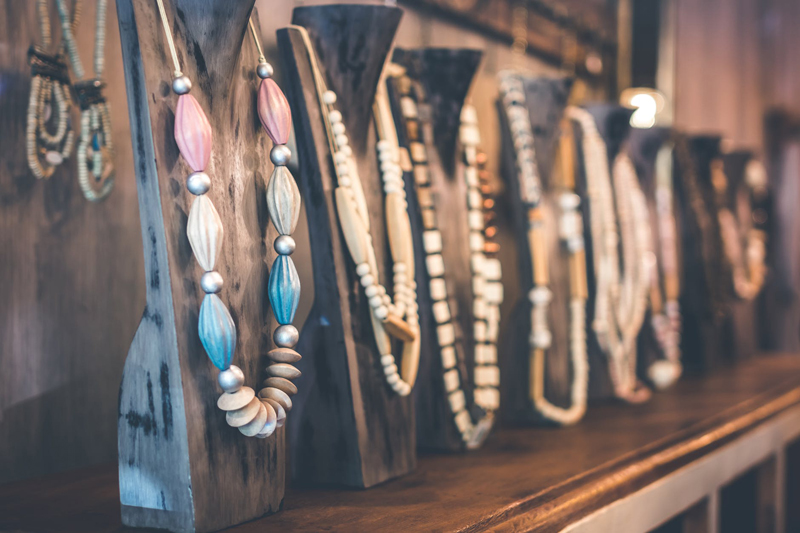Etched Copper Pendant

Be your own designer! Etch your drawing onto a copper pendant. These beautiful pieces of art are easier to make than you think in just 6 easy steps. Both beginners and seasoned jewelry makers will enjoy this unique project and you will be amazed with your gorgeous custom piece that will be admired by all. This is a project that you will come back to again and again.
First gather your supplies together and make sure you have adequate workspace with access to a nearby sink. Then organize and set up your work area as needed. It's always a good idea to carefully read through and review each step of the process thoroughly before beginning.
Supplies
A 24-gauge, 2-inch copper disc with a hole for your bail. Cleaning the copper thoroughly to remove all oils is best achieved with a green scrubbie and a household cleanser. A medium point permanent black marker will serve as the resist. Ferric chloride, baking soda, and ammonia will be used for the etching process. A rigid plastic sandwich container with a lid, will hold the etchant. Clear packing tape, a piece a styrofoam smaller than your container, and a small vibrating motor will position the piece for etching. Fine grit sanding paper and wax sealant will be used in the final step.
Safety
Always use proper safety precautions, I just cannot stress this enough. Rubber gloves and an apron protect against any splashes that may irritate the skin and stain your clothing. Use wooden or plastic tongs to lift your piece out of the etchant. Of course, always wear your safety glasses!
*Cleaning Copper
Cleaning your copper is the hardest step, so be patient and don't be afraid to scrub hard. To properly clean your piece, always hold it by the edges to avoid oily fingerprints. Then scrub vigorously with a green scrubbie using a household cleanser and rinse well. Watch for the water to run off, not bead. Repeat until there is no beading. Your piece is now clean, free of any oils and ready for the next step.
*Draw Your Design
Now using the permanent marker, draw a design of choice onto the copper. Sometimes random swirls, dots, and curves make a nicer design than a detailed drawing. Feel free to get as creative as you wish here, but if you are a beginner-you may wish to start off with a simple design.
TIP: Your design will be sharper and more intricate if your lines do not touch.
*Prepare For Etching
Carefully pour the ferric chloride into plastic container until the liquid is about an inch and a half deep. Then wrap the packing tape around your styrofoam with the sticky side exposed. This will hold your piece as it floats in the etchant. Then firmly press the copper onto tape, without touching the face of the piece and with design on the exposed side.
TIP: Use a fine tip tool to gently press on the black ink area to secure the piece firmly onto the tape.
*Etching
Now very carefully place the styrofoam in the plastic container with ferric chloride. As the copper submerges into the liquid, it is suspended by the floating styrofoam. Then place the lid on the container and position the vibrating motor on the top or touching the side of the container. Set your timer for 30 minutes.
TIP: Observe to make sure the piece stays stuck to the tape once it's in the etchant.
*Neutralize After Etching
Once the etching is complete, gently lift the styrofoam from the etchant. In your sink area pull the copper off of the tape and sprinkle the design with a little baking soda and a few drops of ammonia. You will see the solution bubbling up; this is neutralizing the etchant. Then scrub the piece thoroughly, rinse with water and dry well.
TIP: Hold the styrofoam over the container and look across the surface of the copper. You can see the depth of the etching, if you would like a deeper etching return to container prior to neutralizing. Check the piece every 5 minutes until you are satisfied with the depth of the etching.
*Enhancing The Etching
Then using a piece of fine grit sandpaper, lightly sand your design. You may choose to clean and seal your piece with a suitable wax like Briwax. Lastly, place a bail or jump ring through the hole and hang the finished piece from your favorite chain.
You now have a beautiful pendant.
First gather your supplies together and make sure you have adequate workspace with access to a nearby sink. Then organize and set up your work area as needed. It's always a good idea to carefully read through and review each step of the process thoroughly before beginning.
Supplies
A 24-gauge, 2-inch copper disc with a hole for your bail. Cleaning the copper thoroughly to remove all oils is best achieved with a green scrubbie and a household cleanser. A medium point permanent black marker will serve as the resist. Ferric chloride, baking soda, and ammonia will be used for the etching process. A rigid plastic sandwich container with a lid, will hold the etchant. Clear packing tape, a piece a styrofoam smaller than your container, and a small vibrating motor will position the piece for etching. Fine grit sanding paper and wax sealant will be used in the final step.
Safety
Always use proper safety precautions, I just cannot stress this enough. Rubber gloves and an apron protect against any splashes that may irritate the skin and stain your clothing. Use wooden or plastic tongs to lift your piece out of the etchant. Of course, always wear your safety glasses!
*Cleaning Copper
Cleaning your copper is the hardest step, so be patient and don't be afraid to scrub hard. To properly clean your piece, always hold it by the edges to avoid oily fingerprints. Then scrub vigorously with a green scrubbie using a household cleanser and rinse well. Watch for the water to run off, not bead. Repeat until there is no beading. Your piece is now clean, free of any oils and ready for the next step.
*Draw Your Design
Now using the permanent marker, draw a design of choice onto the copper. Sometimes random swirls, dots, and curves make a nicer design than a detailed drawing. Feel free to get as creative as you wish here, but if you are a beginner-you may wish to start off with a simple design.
TIP: Your design will be sharper and more intricate if your lines do not touch.
*Prepare For Etching
Carefully pour the ferric chloride into plastic container until the liquid is about an inch and a half deep. Then wrap the packing tape around your styrofoam with the sticky side exposed. This will hold your piece as it floats in the etchant. Then firmly press the copper onto tape, without touching the face of the piece and with design on the exposed side.
TIP: Use a fine tip tool to gently press on the black ink area to secure the piece firmly onto the tape.
*Etching
Now very carefully place the styrofoam in the plastic container with ferric chloride. As the copper submerges into the liquid, it is suspended by the floating styrofoam. Then place the lid on the container and position the vibrating motor on the top or touching the side of the container. Set your timer for 30 minutes.
TIP: Observe to make sure the piece stays stuck to the tape once it's in the etchant.
*Neutralize After Etching
Once the etching is complete, gently lift the styrofoam from the etchant. In your sink area pull the copper off of the tape and sprinkle the design with a little baking soda and a few drops of ammonia. You will see the solution bubbling up; this is neutralizing the etchant. Then scrub the piece thoroughly, rinse with water and dry well.
TIP: Hold the styrofoam over the container and look across the surface of the copper. You can see the depth of the etching, if you would like a deeper etching return to container prior to neutralizing. Check the piece every 5 minutes until you are satisfied with the depth of the etching.
*Enhancing The Etching
Then using a piece of fine grit sandpaper, lightly sand your design. You may choose to clean and seal your piece with a suitable wax like Briwax. Lastly, place a bail or jump ring through the hole and hang the finished piece from your favorite chain.
You now have a beautiful pendant.

Related Articles
Editor's Picks Articles
Top Ten Articles
Previous Features
Site Map
Content copyright © 2023 by Susan Mendenhall. All rights reserved.
This content was written by Susan Mendenhall. If you wish to use this content in any manner, you need written permission. Contact Susan Mendenhall for details.



